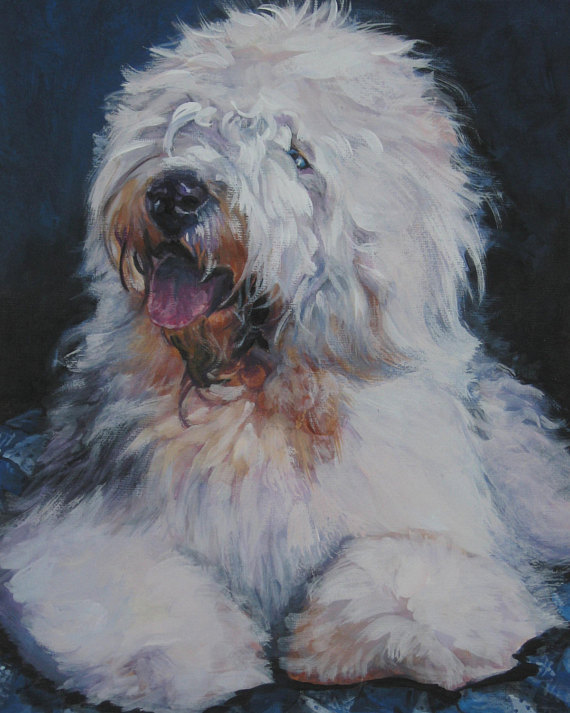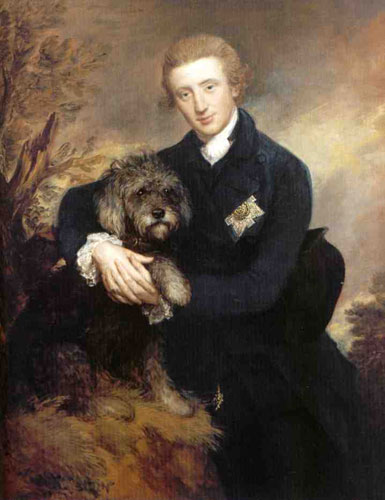
As with many of our breeds, history doesn’t record a “Eureka!” moment that points to the exact origins of the Old English Sheepdog. Instead, we have conjecture and traces of evidence. The strongest of the latter points to the early nineteenth century of the Southwestern Counties of England.

Henry Scott, 3rd Duke of Buccleuch
Of the former, however, there is no shortage of theories. There are those who believe the OES to be related to the Barbone and Deerhound, while others think the Bergamasco and Briard are behind today’s “Bobtail.” Some cynologists maintain that the Russian Owtchar was one of the breed’s progenitors, dogs brought to Great Britain on ships from the Baltic, then crossed with Scotch Bearded Collies, and possibly with drover dogs known as Smithfields or Cotswold Cors, as well. Some even point to a portrait of Henry Scott, 3rd Duke of Buccleuch painted by Gainsborough as early as 1771, and believe that the dog in the painting resembles an early version of an Old English Sheepdog.
We may never know any of it with certainty.
What we do know is that by the 19th century, the breed was widely used as a drover dog in agricultural areas to drive sheep and cattle to market. Since there was a tax on all dogs unless they were working dogs, tails were “bobbed” to distinguish them from non-working dogs, and this led to the breed’s nickname: Bobtail. Another practice was to shear the dogs in the spring when the sheep were shorn, then use the dog hair to make yarn which was woven into blankets and clothing (a fiber called chiengora).
The breed’s “debut” as something other than a working dog came at the Birmingham Show of 1873 in England. The breed enchanted everyone and became well-liked within the dog show circuit. That same year, the Kennel Club was formed, and the Old English Sheepdog was officially recognized as a distinct dog breed. Within fifteen years, the Old English Sheepdog had not only earned a solid reputation in England, but it began to make its way to other shores. The AKC accepted the breed in 1888, but it was American “Captains of Industry” traveling to the UK to play and secure business deals who saw the dogs and brought them home. Pittsburgh industrialist, William Wade, was the first, but by the end of the century, the Guggenheims, Vanderbilts,Morgans, Goulds, and Harrisons (five of the wealthiest families in the country) all owned, bred and exhibited the dogs at New York’s 1904 Westminster Kennel Club Dog Show.
Half a century later, the breed had became one of the most beloved family dogs, and was a popular dog to include on TV and the Silver Screen, but another half century later, and the breed may now be in trouble. The Old English Sheepdog is now on the Kennel Club’s “Watch List” of vulnerable breeds because in 2016, only 424 registrations for the Old English Sheepdog were made in its country of origin.
Image: Old English Sheepdog by LA Shepard
